Mountain goats are fascinating creatures that inhabit the rugged terrains of North America’s mountain ranges. These mammals have adapted to extreme environments and have developed unique physical characteristics that allow them to thrive in their habitats. However, despite their impressive survival skills, mountain goats face several predators that pose a significant threat to their population.
This article aims to explore the various predators of mountain goats and how they impact these animals’ ecosystems. We will delve into the hunting techniques and strategies used by these predators, as well as examine the effects on mountain goat populations and conservation efforts aimed at protecting them. Through this exploration, we hope to gain a deeper understanding of the complex relationships between predator and prey in nature.
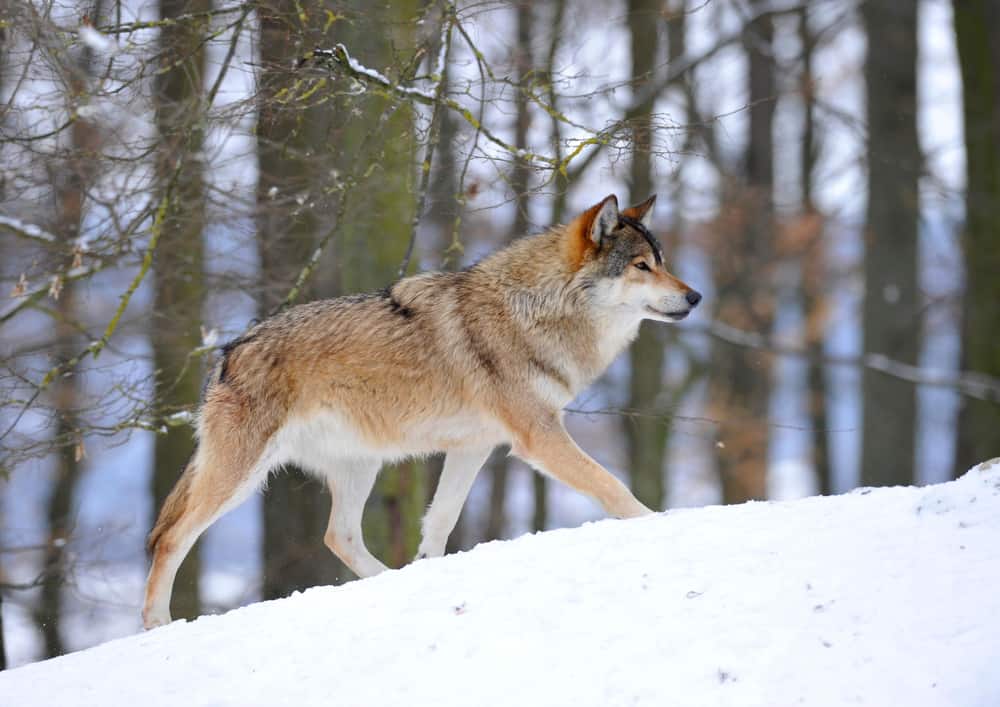
Wolves
Wolves are a formidable threat to mountain goats, often hunting in packs and utilizing their superior speed and strength to pursue and capture their prey. Mountain goats have developed various survival tactics to defend themselves from these fierce predators. They typically seek refuge in steep terrain that is difficult for wolves to navigate, using their superior climbing abilities to find safety on rocky ledges or narrow ridges.
Despite their agility, mountain goats still fall prey to the deadly jaws of wolves. Once cornered or ambushed by a pack of wolves, mountain goats will use their sharp horns as weapons and engage in aggressive combat with the attackers. However, this strategy does not always guarantee survival against such powerful adversaries. The constant threat of predation has shaped the evolutionary adaptations of mountain goats over time, allowing them to adapt and thrive in some of the most inhospitable regions on Earth.
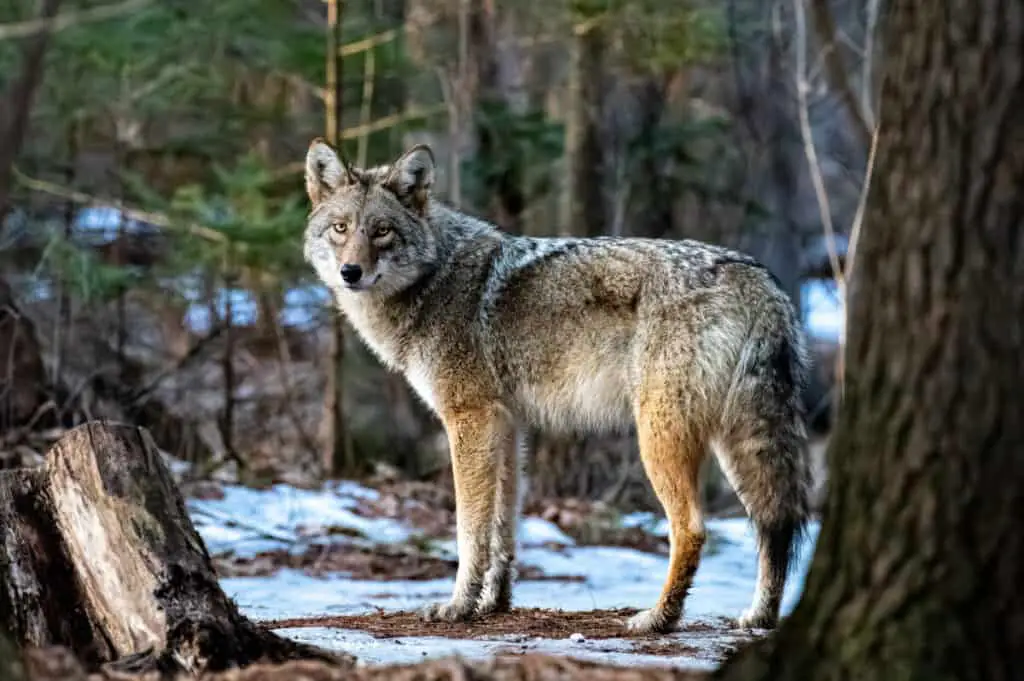
Cougars
Cougars, also known as mountain lions, are skilled predators that have been observed preying on mountain goats in their natural habitat. These big cats are silent and deadly hunters, stalking their prey before pouncing with incredible speed and agility. Here are some interesting facts about cougars hunting mountain goats:
- Cougars often hunt alone, but they may occasionally work together to take down larger prey like adult mountain goats.
- They use their powerful jaws to bite through the neck of their victim, delivering a quick and lethal blow.
- Mountain goats are not easy targets for cougars due to their keen sense of hearing and excellent climbing skills.
- Despite this, cougars can still be successful in taking down a goat if they catch it off guard or separate it from its herd.
For mountain goats, survival means being constantly vigilant against potential threats like cougars. Their ability to navigate steep terrain with ease gives them an advantage over many other animals in the wild, but even this is not always enough to evade a determined predator like the cougar. Despite the dangers they face, these resilient animals have adapted strategies such as group living and vigilance against predators that allow them to thrive in harsh environments where few others can survive.
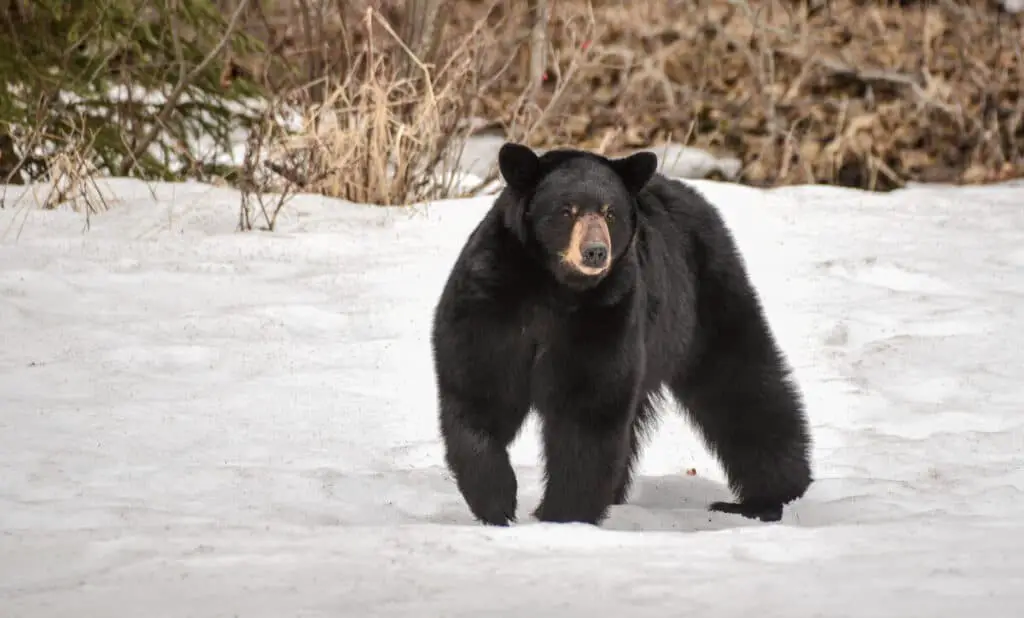
Bears
Bears are known for their opportunistic hunting behavior, as they will often scavenge for food and take advantage of any prey that presents itself in their natural habitat. This includes mountain goats, which are a potential food source for some bear species. Grizzly bears and black bears can both be found in the same habitats as mountain goats, making them a potential threat to these agile climbers.
In areas where there is an abundance of vegetation or other prey animals, bears may not actively hunt mountain goats but instead rely on scavenging carcasses or preying on weaker individuals. However, if the opportunity arises, bears have been known to use their strength and powerful jaws to take down even fully grown adult mountain goats. Despite this danger, mountain goats have developed strategies to avoid predation by bears including staying in steep terrain where it is difficult for bears to pursue them.
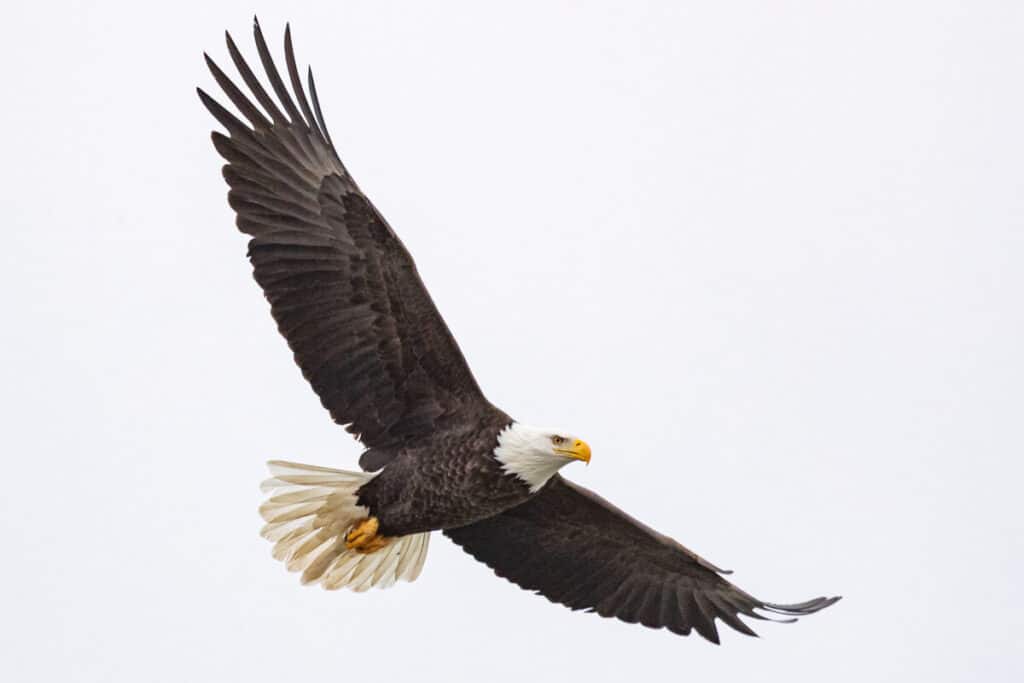
Eagles
The mountainous regions are home to a powerful predator that uses its aerial prowess to take down prey, the eagle. Eagles are known for their hunting patterns, which involve soaring above the mountains and scanning the terrain for potential targets. Once they spot a prey, eagles will swiftly descend towards it with incredible speed and precision. They use their sharp talons and beaks to capture their target before carrying it away to consume.
Despite being formidable predators, mountain goats have natural defenses against eagle attacks. Their keen eyesight allows them to detect incoming threats from afar, giving them enough time to flee or seek cover in rocky terrains where eagles cannot easily reach them. Additionally, mountain goats have strong legs that enable them to climb steep cliffs and escape danger quickly. In some cases, adult male goats may even confront an attacking eagle head-on using their horns as weapons of defense. Overall, while eagles pose a significant threat to mountain goats in the wild, these animals’ natural defenses serve as effective measures against aerial assaults.
Hunting Techniques and Strategies
Hunters in mountainous regions have to rely on their knowledge of the terrain and their prey’s behavior to successfully capture their target. Mountain goats are well-adapted to their environment, with specialized hooves that allow them to traverse steep, rocky slopes with ease. They also possess exceptional agility and balance, which makes them difficult targets for predators like wolves and cougars.
To successfully hunt a mountain goat, hunters need to be skilled at camouflage tactics and understand the animal’s defensive behavior. Mountain goats have excellent eyesight and can spot potential threats from afar. Therefore, hunters must blend in with the surroundings by wearing appropriate clothing that matches the environment. Additionally, they need to approach their target slowly and patiently while minimizing noise that could alert the goat. Finally, hunters must be prepared for any sudden movements or changes in the goat’s behavior as it tries to evade its predator.
- The thought of a majestic mountain goat being hunted down evokes feelings of sadness and pity.
- Knowing that these creatures are vulnerable targets for predators highlights how cruel nature can be.
- It is worrying that humans have developed such advanced hunting techniques when we should be working towards protecting endangered species instead.
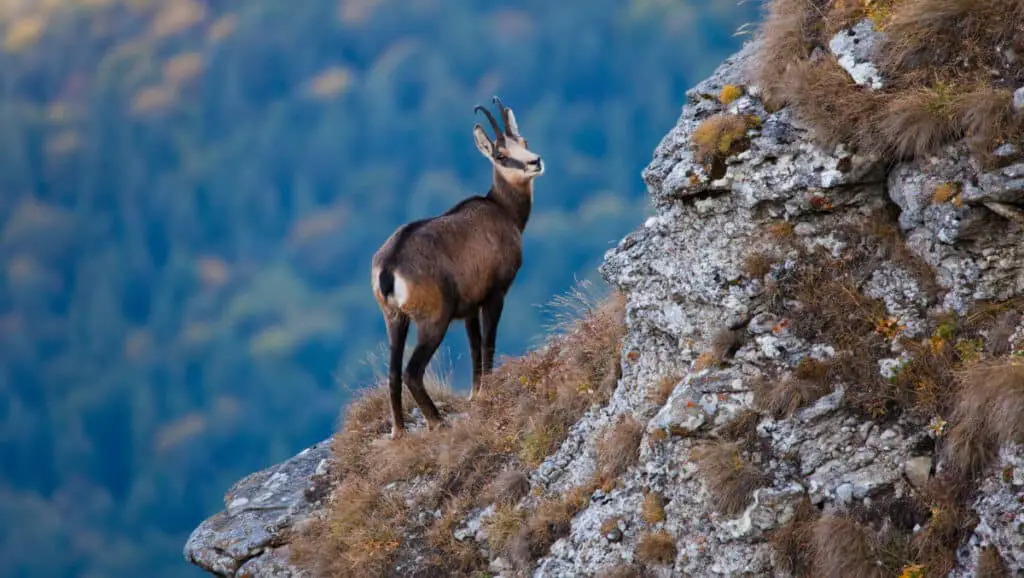
Impact on Mountain Goat Populations
The population of these agile and resilient creatures has been significantly impacted by the activities of human hunters. Mountain goats are often hunted for their meat, hides, and horns, which can fetch a high price on the black market. As a result, many mountain goat populations have experienced significant declines in recent years. In some regions, such as Alaska and British Columbia, hunting regulations have been put in place to protect mountain goats from overhunting. However, illegal poaching remains a major threat to these animals.
In addition to hunting pressures, mountain goats are also facing habitat loss due to climate change and human development. As temperatures rise and glaciers melt, the alpine habitats that these animals rely on for food and shelter are shrinking. Human activities such as mining, logging, and recreational use of wilderness areas can also disrupt mountain goat habitat. To help mitigate these threats to mountain goat populations, conservation measures such as protected areas and habitat restoration projects may be necessary.
Conservation and Protection Efforts
The impact of predators on mountain goat populations highlights the need for conservation and protection efforts. It is crucial to understand the threats faced by these animals and implement measures to mitigate them. Community involvement plays a significant role in achieving this objective as local residents can provide valuable insights into the challenges faced by mountain goats.
Government policies also play a critical role in protecting mountain goats from predators. One such policy is the Endangered Species Act, which provides legal protection to threatened or endangered species and their habitats. Additionally, state wildlife agencies work closely with federal agencies to implement management plans that address predator control, habitat restoration, and monitoring of populations. These policies are essential in ensuring that mountain goat populations remain healthy and viable for future generations. Together, community involvement and government policies can help conserve these magnificent creatures and protect them from the various threats they face in their natural habitat.
Conclusion
In conclusion, mountain goats face various predators in their natural habitat. Wolves are fierce adversaries that can hunt in packs and pose a significant threat to young goats. Cougars, on the other hand, are silent and deadly hunters that use stealth to ambush their prey. Bears are opportunistic predators that scavenge carcasses but may also attack live goats.
Eagles are aerial assassins that target young or weakened goats by swooping down from above. The impact of these predators on mountain goat populations is significant and can affect the ecosystem as a whole. Conservation and protection efforts are necessary to maintain healthy populations of mountain goats and ensure the survival of this species for future generations. It is crucial to implement measures such as habitat preservation, predator control programs, and public education to promote coexistence between humans and wildlife.

